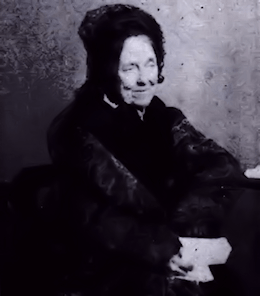Textus Receptus Bibles
Julia E. Smith Translation 1876
| 4:1 | After these things I saw, and, behold, a door opened in heaven: and the first voice which I heard as of a trumpet speaking with me; saying, Come up here, and I will show thee what things must be after these. |
| 4:2 | And instantly I was in the spirit: and, behold, a throne was set in heaven, and one sitting upon the throne. |
| 4:3 | And he sitting was like the vision to a jasper stone and a sardine; and a rainbow round about the throne, like the vision to an emerald. |
| 4:4 | And round about the throne twenty-four thrones; and sitting upon the thrones I saw twenty-four elders, surrounded with white garments; and they had golden crowns upon their heads. |
| 4:5 | And from the throne go forth lightnings, and thunders, and voices: and seven torches of fire burning before the throne, which are the seven Spirits of God. |
| 4:6 | And before the throne a sea of glass like crystal: and in the midst of the throne, and round about the throne, four living creatures full of eyes before and behind. |
| 4:7 | And the first living creature like a lion, and the second living creature like a calf, and the third living creature having the face as a man, and the fourth living creature like a spreading eagle. |
| 4:8 | And the four living creatures, one by itself, had six wings together round about; and within full of eyes; and they have no rest day and night, saying, Holy, holy, holy, Lord God, the Omnipotent Ruler, who was, and who being, and who coming. |
| 4:9 | And when the living creatures shall give glory and honour and thanks to him sitting on the throne, and to him living forever and ever, |
| 4:10 | The twenty-four elders will fall before him sitting on the throne, and will worship him living forever and ever, and will cast their crowns before the throne, saying, |
| 4:11 | Worthy art thou, O Lord, to receive glory, and honour, and power; for thou didst create all things, and by thy will they are, and they were created. |

Julia E. Smith Translation 1876
The Julia Evelina Smith Parker Translation is considered the first complete translation of the Bible into English by a woman. The Bible was titled The Holy Bible: Containing the Old and New Testaments; Translated Literally from the Original Tongues, and was published in 1876.
Julia Smith, of Glastonbury, Connecticut had a working knowledge of Latin, Greek and Hebrew. Her father had been a Congregationalist minister before he became a lawyer. Having read the Bible in its original languages, she set about creating her own translation, which she completed in 1855, after a number of drafts. The work is a strictly literal rendering, always translating a Greek or Hebrew word with the same word wherever possible. Smith accomplished this work on her own in the span of eight years (1847 to 1855). She had sought out no help in the venture, even writing, "I do not see that anybody can know more about it than I do." Smith's insistence on complete literalness, plus an effort to translate each original word with the same English word, combined with an odd notion of Hebrew tenses (often translating the Hebrew imperfect tense with the English future) results in a translation that is mechanical and often nonsensical. However, such a translation if overly literal might be valuable to consult in checking the meaning of some individual verse. One notable feature of this translation was the prominent use of the Divine Name, Jehovah, throughout the Old Testament of this Bible version.
In 1876, at 84 years of age some 21 years after completing her work, she finally sought publication. The publication costs ($4,000) were personally funded by Julia and her sister Abby Smith. The 1,000 copies printed were offered for $2.50 each, but her household auction in 1884 sold about 50 remaining copies.
The translation fell into obscurity as it was for the most part too literal and lacked any flow. For example, Jer. 22:23 was given as follows: "Thou dwelling in Lebanon, building as nest in the cedars, how being compassionated in pangs coming to thee the pain as in her bringing forth." However, the translation was the only Contemporary English translation out of the original languages available to English readers until the publication of The British Revised Version in 1881-1894.(The New testament was published in 1881, the Old in 1884, and the Apocrypha in 1894.) This makes it an invaluable Bible for its period.